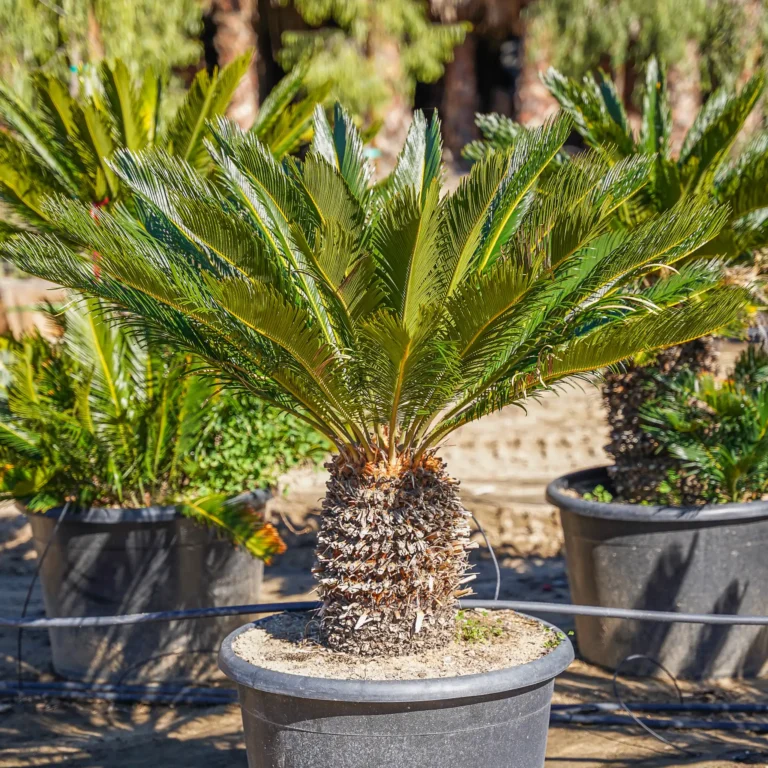Sago Palm
Palm Overview
Botanical Name: Cycas revoluta
Add a bold, tropical statement to your landscape or interior with the Sago Palm, a living fossil that brings sculptural elegance and timeless beauty to any setting. Despite its name, the Sago Palm isn’t a true palm—it’s a cycad, an ancient plant group that dates back over 200 million years. With its striking symmetry, glossy dark-green fronds, and dramatic form, the Sago Palm is a favorite among garden designers and plant collectors alike.
This plant is incredibly resilient—drought-tolerant, sun-loving, and surprisingly cold-hardy—making it a great choice for a wide range of climates and conditions. Plus, its low-maintenance nature makes it a dream for anyone seeking an easy-care showstopper.
Plant Characteristics
| Feature | Details |
|---|---|
| Height | 3–5 ft (up to 10 ft with age) |
| Canopy Spread | 3–5 ft |
| Trunk | Thick, textured; single or clumping base |
| Fronds | Glossy, dark green, feather-like; 2–5 ft long |
| Growth Rate | Slow (adds a few inches per year) |
Environmental Needs
| Requirement | Details |
|---|---|
| Sunlight | Full sun to partial shade (brighter light = denser growth) |
| Soil | Well-drained soil; sandy or loamy preferred |
| Watering | Low to moderate; allow soil to dry between waterings |
| Hardiness | USDA Zones 8–11; tolerates down to 15–20°F (-9 to -6°C) |
Fruit and Flowering
| Category | Details |
|---|---|
| Flowers | Not true flowers; produces cone-like structures in the center of the crown |
| Sex | Dioecious (separate male and female plants) |
| Fruit | Large, oval, orange to red seeds on female plants (toxic if ingested) |
Uses
Accent Plant – Ideal as a focal point in tropical or formal gardens
Container Plant – Perfect for patios, entryways, balconies, or indoor use in bright light
Foundation Planting – Adds bold texture and structure near walls or pathways
Indoor Plant – Makes a dramatic statement in well-lit interior spaces (near windows or sunrooms)
Rock Gardens – Excellent in xeriscape or desert-style landscaping due to its drought tolerance
Poolside Landscaping – Provides a lush, exotic look without excessive leaf litter
Mediterranean & Japanese Gardens – Complements both formal symmetry and minimalist styles
Topiary & Bonsai (Advanced Use) – Trained specimens can be shaped artistically for collectors
Maintenance
Water sparingly; let soil dry out between waterings
Place in full sun to partial shade (bright light indoors)
Remove old or damaged fronds as needed
Fertilize 1–2 times a year during spring/summer
Watch for scale insects; treat if necessary
Protect from frost in cold climates
Keep away from pets and children (toxic if ingested)
